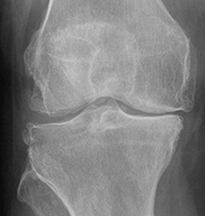One of the most common forms of cartilage restoration is still the microfracture procedure; however, it should be used selectively to obtain the best results.

Cartilage is the lining of the joint that is the equivalent to the tire on the wheel of your car. As you lose rubber, you eventually will be driving with the rim on the pavement. This is the equivalent to “bone-on-bone” arthritis where the cartilage lining of the joint has been destroyed and the bones below are now the new joint surface. Arthritis such as this is still best treated with a knee replacement. However, there is a role for other procedures short of replacement when there is an opportunity to intervene before “bone-on-bone” arthritis. This focal cartilage loss is more analogous to a nail in the tire that needs to be patched, but the general integrity of the tire is intact.

Cartilage damage is a complex problem, as the body does not have the innate ability to regrow cartilage once it has been lost. Enter the field of cartilage restoration. One of the first cartilage restoration procedures described was the microfracture procedure. This has taken several different forms and there are a variety of techniques to accomplish this, but the general idea is that channels are created within the cartilage defect to allow for access to the stem cells within the bone marrow. These cells (mesenchymal stem cells or MSCs) are precursors to the cells that create cartilage (chondrocytes). A video of the microfracture procedure can be seen below. Note the bleeding from the bone when the procedure is complete, which contains the cells that form the reparative tissue. The word reparative is chosen on purpose as opposed to restorative, because unfortunately this helps fill the void and decrease pain, but it does not create normal cartilage.
So why do it? Because its readily available and the rehabilitation is less involved. Also, when patients are well suited to microfracture, the outcomes are significantly improved. So are you a candidate for this procedure? Data published by several groups suggests that the best outcomes are achieved under the following setting:
Factors heading into surgery
| Age | < 40 years old |
| Lesion Size | < 4cm2 |
| BMI | < 30 kg m2 |
| Symptom Onset | < 12 months |
Factors during surgery
- No prior surgery
- Proper surgical technique (calcified cartilage layer removal and resecting cartilage to healthy margin)
Factors after surgery
- At least 66% of defect fill with repaired tissue
- Proper post operative protocol with limited weight bearing
(Mithoefer, K., McAdams, T., Williams, R. J., Kreuz, P. C., & Mandelbaum, B. R. (2009). Clinical efficacy of the microfracture technique for articular cartilage repair in the knee: an evidence-based systematic analysis. The American Journal of Sports Medicine, 37(10), 2053–2063. doi:10.1177/0363546508328414)



